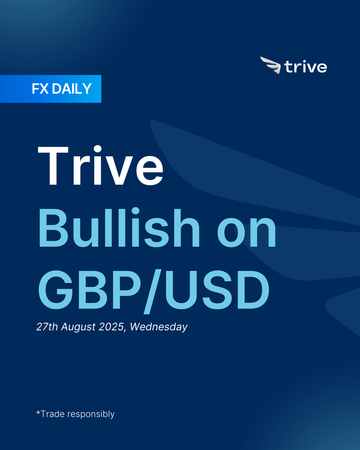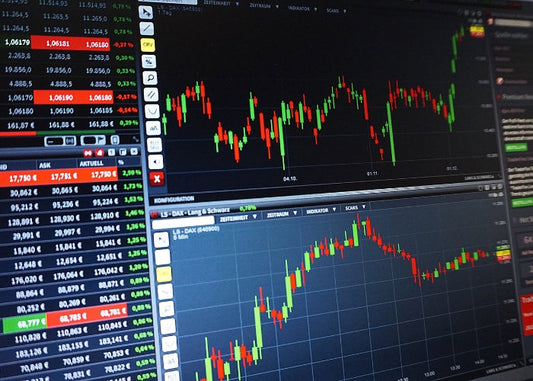FX Daily: Trive Bullish on EUR/USD

The euro recovered as Powell’s dovish Jackson Hole speech drove the dollar sharply lower, overshadowing weak German GDP and confirming markets’ September cut expectations. Strong Eurozone PMIs signaled resilience, offering modest fundamental support, though the euro largely followed USD swings. Near term, softer US data and Fed easing risks keep EUR/USD biased higher, with dips likely supported. Longer term, euro upside may struggle without fresh catalysts, but for now momentum favors extending gains.
EUR: Bullish, but lack of catalyst
The Euro was pulled in different directions this week, with its movement almost entirely dictated by the sharp swings in the US dollar and the backdrop of domestic data. The currency started on the back foot, sliding toward its 50-day moving average near 1.1640 as a stronger dollar and uncertainty around the Russia-Ukraine peace talks weighed on sentiment. Momentum turned mid-week after flash PMI data from France, Germany, and the wider Eurozone came in stronger than expected, showing resilience in the economy and giving the Euro a solid lift. This optimism was quickly erased late on Thursday when a hawkish US PMI report drove the dollar higher, pushing EUR/USD down to a weekly low near 1.1580. By Friday, however, the entire move was undone. A surprisingly dovish speech from Fed Chair Powell at Jackson Hole sent the dollar plunging, sparking a massive short-covering rally that lifted EUR/USD back toward 1.1700 and erased the week’s earlier losses.
The key driver on the data front was the much stronger-than-expected Eurozone flash PMI report for August. The Composite PMI rose to 51.1 compared to expectations of 50.7, moving further into expansion. Manufacturing in both France and Germany beat forecasts at 49.9, signaling possible stabilization in the industrial sector. This mid-week data gave the Euro a hawkish push. On Friday, however, Germany’s final Q2 GDP was revised lower to -0.3% quarter-on-quarter and -0.2% year-on-year, worse than preliminary figures. While negative, the impact was overshadowed by Powell’s speech. Other data, including softer German producer prices and confirmed Eurozone HICP at 2.0% year-on-year, had little effect on the market.
On the policy side, ECB President Lagarde struck a neutral tone on Wednesday, noting that recent trade deals would be included in September’s projections but offering no surprises. Later in the week, a Bloomberg report suggested that ECB officials increasingly believe they can leave rates unchanged in September. Germany’s Nagel reinforced this view by stating he saw little reason for the ECB to act further on rates, confirming the market’s expectations for a pause.
Geopolitical developments also played a role. The week began with cautious optimism around peace talks in Washington, but sentiment soured after Russia carried out one of its heaviest drone and missile strikes overnight into Thursday. The situation worsened when Hungary reported that oil deliveries through the Druzhba pipeline had been halted due to the attacks, underlining the economic risks facing Europe. The EU and US also issued a joint statement on their trade deal, though this had no noticeable impact on the Euro.
Market sentiment showed that the Euro was mostly a passenger to the US dollar’s moves. Thursday’s hawkish US data sent the dollar soaring and EUR/USD to weekly lows, while Friday’s dramatic rally came not from Euro-specific factors but from the collapse of the dollar following Powell’s dovish message. This triggered a broad risk-on rally and forced aggressive short-covering in EUR/USD, closing out the week with the Euro back near 1.1700.
We believe the Euro is still missing a bit of bullish momentum. This past week showed that the single currency was more of a passenger than a driver, reacting almost entirely to swings in the US Dollar rather than finding strength of its own. The weakness after the stronger US PMI data reminded us that the Euro is quite fragile.
Over the near term, we believe the Euro leans neutral-weak bullish. The Eurozone’s stronger flash PMIs hint at a stabilizing growth pulse, and Powell’s unexpectedly dovish tone took the wind out of the dollar, which is why we think the euro can build on the rebound as positioning resets. Geopolitical headlines and sporadic US data surprises can still jar sentiment, but, in our view, the balance of risks in the very near term favors a bit more euro strength rather than fresh weakness.
Looking a bit further out, we turn more cautious. The ECB sounds comfortable pausing, Germany’s growth was revised down, and energy/security risks remain in the background. Without a steady run of softer US data to keep the dollar on the back foot, we think euro rallies become harder to sustain, which is why our bias shifts toward a choppy, headline driven backdrop with a mild downside tilt later in the window, unless Eurozone data keeps beating and US momentum cools in a sustained way.
USD: Powell confirm cut in September?
The US Dollar went through a week of extreme volatility, caught between strong US economic data and a sharp dovish shift from the Federal Reserve. The DXY began the week on solid ground, climbing toward 98.50 in quiet summer trading as markets waited for the Jackson Hole symposium. Momentum turned hawkish mid-week after the release of the July FOMC minutes, which showed most officials were more worried about inflation than employment risks. This view was reinforced on Thursday when the S&P Global Flash PMI came in much stronger than expected, pointing to faster growth and inflation, which pushed rate hikes back into the picture. The dollar jumped to a weekly high near 98.83 as traders quickly priced out Fed easing.
The narrative, however, was overturned on Friday when Fed Chair Jerome Powell delivered a surprisingly dovish speech at Jackson Hole. He highlighted rising risks to the labor market and played down the inflationary impact of tariffs, signaling that a September rate cut was likely. The dollar collapsed in response, erasing its weekly gains and breaking below 98.00, ending the week near 97.55. This marked a sharp reversal driven by the Fed’s sudden shift from focusing on inflation to prioritizing growth risks.
Economic data played a key role throughout the week. Monday’s NAHB Housing Market Index disappointed, falling to 32.0 instead of the expected 34.0. Tuesday’s numbers were mixed, with Housing Starts beating expectations at 1.428M compared to 1.29M, while Building Permits missed forecasts at 1.354M versus 1.386M, leaving little impact on the dollar. On Thursday, volatility surged as jobless claims rose to 235k and the Philly Fed Index dropped to -0.3 against expectations of 7.0, suggesting weakness. But the S&P Global Flash PMI later that day reversed the mood. The Manufacturing index rose back into expansion at 53.3, while the composite reading climbed to 55.4. The commentary leaned hawkish, pointing to rate hikes rather than cuts, which fueled a rally in the USD.
Central bank events dominated the week. The FOMC minutes released Wednesday revealed that most officials saw inflation risks as greater than labor risks, which initially supported the dollar. On the political side, President Trump added pressure on the Fed by calling for Governor Cook to resign over alleged mortgage fraud, raising questions about central bank independence. On Thursday, Fed officials Schmid and Hammack spoke hawkishly, saying they were in no rush to cut rates and were still focused on high inflation, further lifting the dollar. But on Friday, Powell shifted tone entirely, acknowledging labor market risks and describing tariff-related inflation as short-lived. Markets read this as confirmation of a September rate cut. Expectations changed sharply: after Thursday’s strong PMI and hawkish comments, traders had begun questioning whether two cuts by year-end were still realistic. By Friday, markets fully priced in two 25bps cuts by December, with the probability of a September cut jumping from 72% to over 80%.
Geopolitical developments also influenced the dollar. Early optimism around US, Ukraine, and European peace talks faded after Russia launched one of its most intense drone and missile attacks of the war and halted the Druzhba oil pipeline to Hungary. This disappointment gave the dollar some safe-haven support. Meanwhile, a US-EU trade deal framework was reached, though it had little impact on the currency.
Market sentiment shifted dramatically as well. A mid-week sell-off in big technology stocks hurt overall risk appetite, supporting the dollar. By Thursday, the strong PMI data reinforced a “US strength” story, driving the dollar higher. But Powell’s dovish comments on Friday triggered a risk-on rally, sending equities, particularly small caps, sharply higher and dragging the dollar down as markets leaned into expectations of rate cuts.
We saw a classic push-and-pull week: stronger U.S. activity signals lifted rate expectations mid-week, but a dovish turn from the Fed shifted the focus to growth risks and prospective easing. Geopolitics and shifting risk appetite added safe-haven bursts and reversals. In short, markets whipsawed between “higher for longer” and “cuts are coming,” and the dollar followed that pendulum.
We think the near term balance tilts weak bearish for the USD. With markets leaning toward imminent Fed easing, we expect rallies to be sold unless incoming data compels a material repricing of cuts. Brief, headline driven spikes around labor and inflation releases and Fed communications are likely, with risk on phases pressuring the dollar and any growth scare or geopolitical escalation providing only temporary safe haven support. Our base case is to fade strength while front-end yields edge lower.
Looking out a bit further, we see a gradual, uneven softening in the USD as U.S. rate differentials compress and global growth stabilizes. If the Fed follows through with easing and U.S. exceptionalism normalizes, we believe the dollar enters a “sell the rallies” regime into the medium term. That said, we respect the USD’s haven status, stickier inflation or renewed U.S. outperformance could slow or partially reverse the downtrend. Broadly, we prefer staying tactically flexible but structurally biased to a weaker dollar over a multi-month horizon.

EUR/USD 4H
Disclaimer
This material is provided for informational purposes only and does not constitute financial, investment, or other advice. The opinions expressed in this material are those of the author and do not necessarily reflect the views of Trive International. No opinion contained in this material constitutes a recommendation by Trive International or its author regarding any particular investment, transaction, or investment strategy. This material should not be relied upon in making any investment decision.
The information provided does not consider the individual investment objectives, financial situation, or needs of any specific investor. Investors should seek independent financial advice tailored to their individual circumstances before making any investment decisions. Trive International shall not be liable for any loss, damage, or injury arising directly or indirectly from the use of this information or from any action or decision taken as a result of using this material.
Trive International may or may not have a financial interest in the companies or securities mentioned. The value of investments may fluctuate, and investors may not get back the amount they originally invested. Past performance is not indicative of future results.
For more information about Trive International, please visit http://trive.com/int
Additional Information
Investing involves risk, including the potential loss of principal. Diversification and asset allocation strategies do not ensure a profit or guarantee against loss. The content in this material is subject to change without notice and may become outdated or inaccurate over time. Trive International does not undertake any obligation to update the information in this material.
By accessing this material, you acknowledge and agree to the terms of this disclaimer. If you do not agree with these terms, please refrain from using this information.
No comments
Home
Trive
TriveHub





0 comments